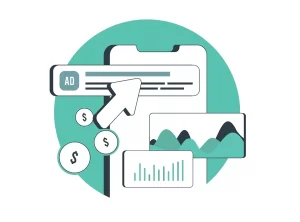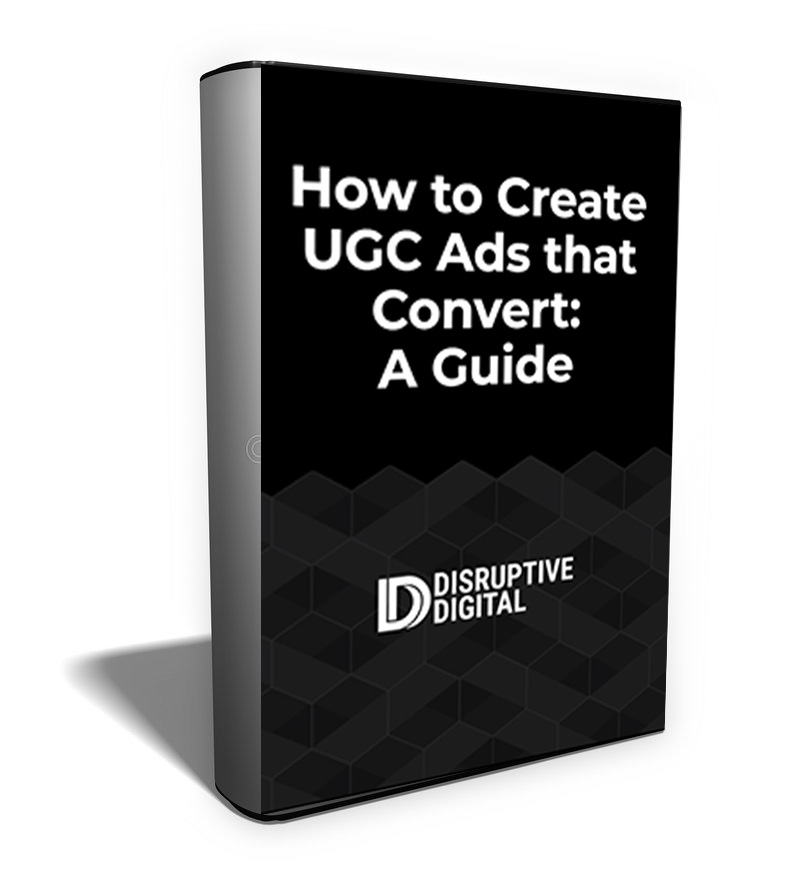In the evolving world of digital advertising, understanding how to effectively use Meta Ads (formerly Facebook Ads) is crucial for any media buyer. However, many marketers still fall into common pitfalls that hinder ad performance and waste budget.
Here are ten red flags indicating the person running your ads might not be fully grasping the nuances of Meta Ads.
1. Using Interest Targeting
If you are leveraging interest targeting in any capacity, you are likely leaving cheaper conversions on the table.
Broad targeting has been found to outperform interest-based targeting, delivering +16% better CPAs.
During my tenure at Facebook, one of my initial actions with each ad account I managed was to steer them away from interest targeting. The reason for this shift? Interest targeting narrowed the pool of potential viewers for your ad, whereas broad targeting proved more effective due to the pixel’s conversion optimization capabilities.
Broad targeting was so successful that Meta transitioned advertisers who used interest targeting to new programs that didn’t restrict them to such narrow parameters. Now when interest targeting is employed, the system automatically widens its reach to include more users.
Therefore, if you were to target multiple different interest groups, you would essentially be fragmenting your budget significantly, thereby diminishing your campaign’s performance. This is because you wouldn’t be fully utilizing Meta’s powerful machine learning and optimization capabilities inherent in its advertising signal.
2. Not Exiting the Learning Phase
Incorporating too many ad sets is a surefire way to drive worse performance.
Instead of optimizing for people who will convert on your ads, your account is relegated to the Learning Phase, a period of worse performance and higher volatility.
Advertisers with ~20% of spend in Learning Phase see +17% conversions and -15% CPA vs. advertisers with ~80% of spend in Learning Phase.
To efficiently move beyond the Learning Phase, an ad set requires about 50 optimization events within a 7-day period. Therefore, it’s essential to allocate a budget that supports these 50 optimization events in a week. Setting a budget that is either too low or excessively high can mislead the delivery system regarding the optimal audience for your ads.
Another significant factor preventing ad sets from exiting the Learning Phase is the volume of ad sets. Running too many ad sets simultaneously leads to less frequent delivery for each set. As a result, fewer ad sets complete the Learning Phase, and more of the budget is consumed before the delivery system can optimize performance effectively. A practical approach to mitigate this issue is to simplify your account by consolidating ad sets. This consolidation not only streamlines the number of ad sets but also merges their delivery learnings, enhancing ad performance.
Should your ad set fail to accumulate sufficient optimization events to exit the Learning Phase, the status in the Delivery column will display “Learning limited.”
3. Manually Selecting Placements
On Meta, advertisers are able to run campaigns a multitude of apps and services. The different places where ads can be shown are called placements—for example, Facebook Feed or Instagram Stories. Every placement is an opportunity to connect with a campaign’s audience. However, running campaigns for with less placements can lead to overall worse results.
Instead advertisers should focus on placement liquidity, a situation in which campaign budget can flow to the most valuable opportunities, regardless of the placement.
On Meta, you can opt in to all available placements for their selected campaign objective by selecting Automatic Placements during campaign setup.
When you opt in, the delivery system looks for opportunities across all placements, allowing the auction to find the best opportunities available. This is expected to result in cost savings since the best opportunities for achieving your campaign goals may be spread across placements—so delivering to more placements means more access to consumers wherever they may be active.
For example, a campaign using Automatic Placements may be able to find users who are likely to convert on Instagram that are not active on Facebook.
Advertisers who leveraged 6+ placements resulted in a median 5% lower cost per conversion compared to <6 placements.
4. Segmenting Your Creative By Format
While it may seem like a smart idea to run one campaign for videos and another for images given the different format types, this can actually lead to worse overall performance.
Why?
When you run both image and video ads in the same ad set, you can ensure a consistent audience targeting approach. This uniformity is particularly useful when you want to reach the same audience segment with different types of content. It prevents audience fragmentation and ensures your message reaches your target audience regardless of the format.
Meta’s algorithms optimize ad delivery based on performance. By grouping image and video ads together, Meta’s system can more effectively allocate budget towards the ad format that is performing best with your target audience. This dynamic optimization can lead to better overall campaign performance, as the system automatically pushes the most engaging content type.
With a single ad set, your budget is also consolidated, allowing Meta’s algorithms to allocate funds more efficiently based on ad performance. This could potentially lead to a lower cost per action (CPA) as the system is not constrained by budget limitations set on individual ad sets for each format.
In fact in studies by Meta, static + video campaigns achieved a 17% higher conversion lift vs. static images alone.
Lastly, by having both ad formats in the same ad set, you can maintain a consistent frequency of your ads. This ensures that your target audience does not receive too many or too few ads, which can affect campaign effectiveness as well.
5. Not Having a (Proper) CAPI Integration
While Facebook has relied on their Pixel for years as the source of data collection/tracking, this practice is no longer viable on its own with the introduction of iOS 14 and other privacy updates.
Conversions API (CAPI) is Facebook/Meta’s answer to this data loss issue.
CAPI allows advertisers to share data directly from their server/website platform/CRM with Facebook Ads manager.
Facebook/Meta’s intent is that CAPI improves measurement, increases data control, reduces the cost per action, and allows ads to be optimized for things that happen down funnel that wouldn’t have been captured by the Pixel.
Advertisers who implemented the Conversions API saw a 13% cost per result improvement.
But having CAPI alone isn’t enough. You also need to have strong data flowing between your servers and Meta’s ad platform.
This is done via event match quality (EMQ), which indicates how effective the customer information parameters sent with your server event may be at matching events to Meta accounts.
Matched events can help you deliver your ads to people who are more likely to take the action you care about and attribute those actions back to your ads.
Better event match quality means events are more likely to match to Meta accounts.
Matched events help you attribute conversions to your ads and deliver them to people who are more likely to convert, which can result in better ad performance and lower cost per action.
A recent meta-analysis showed that increasing EMQ score resulted in a +33% increase in incremental Purchase events.
6. Not Consistently Testing New Creative
Creative is one of the most important levers for advertisers on Meta. In fact, 56% of all auction outcomes can be attributed to creative.
But how can you take advantage of this lever? Always be testing new creative!
Did you know the fastest growing advertisers on Meta test 11X more creative per month and see an 11X variance in Return on Ad Spend (ROAS) between their top and bottom performing ads?
This can be attributed to several interconnected factors:
-
Diverse Creative Testing Leads to Discovery of High-Performing Ads: By testing a significantly larger volume of creative options, these advertisers increase their chances of discovering exceptionally high-performing ads. This is akin to casting a wider net; the more variations you test, the more likely you are to find those that resonate deeply with your audience. This process naturally leads to a wider variance in performance, as it uncovers both highly effective ads and those that are less so.
-
Tailored Messaging and Segmentation: Testing a large number of creatives allows advertisers to tailor their messages more precisely to specific audience segments. Different groups may respond differently to various creative elements (imagery, messaging, call-to-action). The more tailored an ad is to its audience, the higher the potential ROAS.
-
Learning and Optimization: Frequent testing provides a wealth of data about what works and what doesn’t. Advertisers can use this data to continuously refine their ad creatives and targeting strategies. This iterative process means that successful advertisers are constantly learning from both their high and low-performing ads, leading to a continuous improvement in ROAS over time.
-
Innovative and Fresh Content: Regularly introducing new creative content keeps the ad campaigns fresh and engaging, which is critical in a fast-paced digital environment where consumer attention spans are short. This practice also helps combat ad fatigue among audiences, ensuring sustained engagement.
-
Risk-taking and Experimentation: Advertisers who are willing to test extensively are often more open to taking risks and trying unconventional ideas. This approach can lead to the discovery of highly effective, novel ad concepts that break through the clutter, resulting in high-performing ads.
-
Adaptability to Platform and Consumer Trends: The digital advertising landscape, especially on platforms like Meta, is constantly evolving. Advertisers who test more frequently are better positioned to quickly adapt to changes in platform algorithms, consumer preferences, and market trends.
In summary, the practice of testing a high volume of creative variations enables advertisers to discover more effective ads, tailor messages to audience segments, learn and optimize quickly, introduce innovative content, take calculated risks, and adapt to changing trends. This comprehensive approach is why these advertisers not only see a wide variance in ROAS but also experience faster growth.
7. Not Diversifying Creative
It’s not just important to constantly launch new creative. You also need to make sure you are rotating in new formats and concepts as well.
While some users might prefer images, others prefer videos and carousels. By only showcasing one ad type, you are limiting the system to only reach people who engage with that type of media.
It’s also important to ensure your assets look visually distinct. In fact, Meta’s AI actually scans every image and video you upload and if it sees to ads that look similar, it will treat them similarly in the auction.
Beyond that, creative diversification can unlock net-new audiences as well. For example, featuring an ad with a 24 year-old white male will drive a very different type of responder compared to an ad with a 54 year old Hispanic women.
How much can creative diversification help your performance?
Creative diversification has been shown to drive 32% increased efficiency and 8% incremental reach.
8. Running non-iOS 14 App Campaigns
When you create an ad campaign in Meta Ads Manager and select the app promotion objective, you have the option to toggle on an iOS 14+ campaign.
iOS 14+ campaigns are app promotion campaigns meant to reach people using iOS 14 or later devices.
Without this feature turned on, none of your ads will reach this user base.
Instead all of your ads will only target iPhone users on sub-iOS 14 devices or Android devices.
This can lead to far worse customers without an advertiser even realizing.
However, even if you create an iOS 14+ campaign, there are several changes you may need to make to your ad accounts, campaigns and ad sets.
For example:
-
Each campaign can have only one optimization type.
-
You can create up to 18 iOS 14+ manual app promotion campaigns for each app or 9 Advantage+ app campaigns per country, language and optimization goal for each of the apps you promote.
-
On iOS 14+ app campaigns, you can use the following campaign bid strategies: lowest cost, cost cap, minimum ROAS or bid cap. However, if you choose the cost cap or minimum ROAS bid strategy, your ad set should be scheduled to run at least 3 full days.
If you care about driving app installs on iPhones via Meta ads, the results can be very impactful. However, you still need to understand the limitations of a post-iOS 14 world to get the most out of the platform.
9. Forgetting to Exclude Existing Customers
Targeting existing customers, who already know your product or service and whose repurchase is likely more prompted through their experience or marginal cost channels like email and SMS. But, when that action happens because of exposure to an ad, your ad performance reports can take undue credit without being incremental to the revenue.
Importantly, this targeting strategy isn’t inherently wrong; it still can hold an important place in any comprehensive media mix. But this audience’s inherently increased likelihood to purchase makes an incrementality buying approach crucial to ensure that you spend your ad dollars wisely.
10. Sending People to a Slow Loading Landing Page
Has this ever happened to you? You tap a link on your mobile device, only to have the website take so long to load, you leave before you even see it. You’re not the only one.
53% of mobile consumers will leave a site that takes longer than 3 seconds to load.
There are a number of things businesses can do to help ensure the best possible mobile experience for people. Site load times can be affected by numerous factors, including quality of connectivity, whether or not the site is optimized for mobile and the website’s server. Business can optimize their sites for mobile by:
-
Minimizing landing page redirects, plugins and link shorteners
-
Compressing files to decrease mobile rendering time
-
Improving server response time by utilizing multi-region hosting
-
Using a high-quality Content Delivery Network to reach audiences quickly
-
Removing render-blocking javascript
A slow mobile site doesn’t just frustrate your customers, it can limit your business. In retail, for every one second delay in page load time, conversions can fall by up to 20%.
Conclusion
In summary, navigating the complexities of Meta Ads requires a nuanced approach. By avoiding these common pitfalls, your media buyer can optimize ad spend, reach the right audience, and drive meaningful conversions. If you recognize these red flags in your media buyer’s approach, it might be time for a strategy overhaul.
Thankfully, we can help.
Reach out to us for a free audit of your Meta ad account. Our team of experts will provide a comprehensive review and insights to ensure your advertising strategy is on the right track. Don’t let these common mistakes hinder your success. Contact us today for your free audit and take the first step towards optimizing your Meta advertising strategy!







